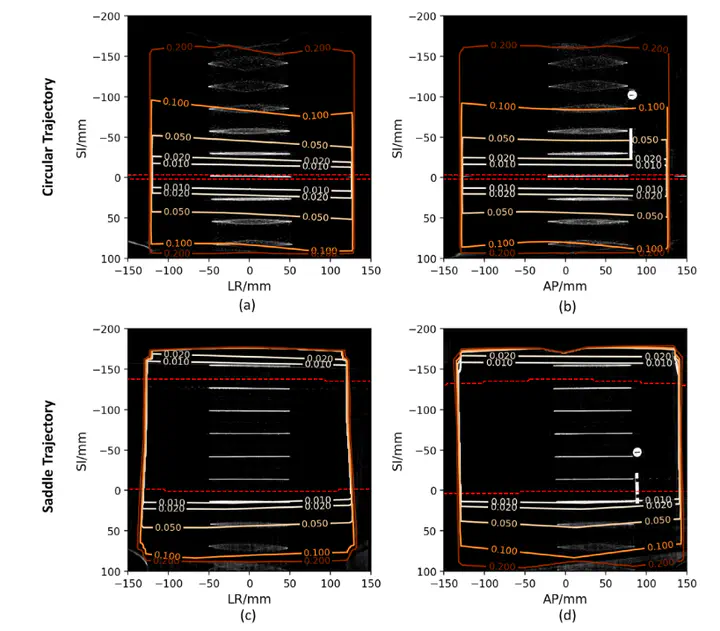DFG Image-guided brachytherapy with real-time navigated needle insertion
 Reduction of cone-beam artefacts by saddle CBCT scans.
Reduction of cone-beam artefacts by saddle CBCT scans.
Interventional radiation therapy (brachytherapy) suffers from the lack of dedicated and flexible protocols for the quantitative assessment of needle insertion accuracy throughout the intervention. Despite the recent advances in the use of cone-beam CT (CBCT) imaging for guidance, the effective implementation of image-guided procedures is limited by procedural constraints. Also, the optimal trade-off between accurate 3D imaging on one hand and fast verification of the needle position during the procedure on the other is largely unexplored. The proposed project focuses therefore on specific developments towards the implementation of image-guided protocols in brachytherapy featuring real-time navigated needle insertion. We aim at exploiting the integration of infrared navigation technologies with mobile CBCT imaging to develop image-guided protocols, with the twofold aim to provide quantitative verification methods and improve image quality. This is intended to address brachytherapy treatments at different treatment sites, including those where image quality is degraded by the effects of intra-fractional motion. We also aim at leveraging Artificial intelligence (AI) methods to enable accurate and reliable needle tracking in X-ray imaging, thus maximizing the confidence level in the execution of accurate brachytherapy treatments. The overall scientific goal of the proposed project will be achieved through the following specific objectives, as a collaborative research effort across three different research institutions sharing the same technological platform: (i) to exploit integrated infrared tracking technologies for navigated needle insertion; (ii) to provide automated tracking of the needle position in X-ray verification images based on AI methods; (iii) to optimize imaging verification protocols relying on the best combination of 3D/sparse 2D imaging; (iv) to enhance CBCT image quality, especially for treatment sites undergoing significant breathing motion. The achievement of such objectives is expected to lead to the implementation of reliable image verification protocols in brachytherapy, complementing real-time guided needle insertion to maximize the accuracy.
